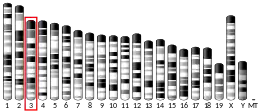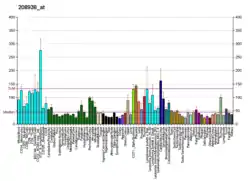| PRCC | |||||||||||||||||||||||||||||||||||||||||||||||||||
|---|---|---|---|---|---|---|---|---|---|---|---|---|---|---|---|---|---|---|---|---|---|---|---|---|---|---|---|---|---|---|---|---|---|---|---|---|---|---|---|---|---|---|---|---|---|---|---|---|---|---|---|
| Identifiers | |||||||||||||||||||||||||||||||||||||||||||||||||||
| Aliases | PRCC, RCCP1, TPRC, papillary renal cell carcinoma (translocation-associated), proline rich mitotic checkpoint control factor | ||||||||||||||||||||||||||||||||||||||||||||||||||
| External IDs | OMIM: 179755 MGI: 2137738 HomoloGene: 38120 GeneCards: PRCC | ||||||||||||||||||||||||||||||||||||||||||||||||||
| |||||||||||||||||||||||||||||||||||||||||||||||||||
| |||||||||||||||||||||||||||||||||||||||||||||||||||
| |||||||||||||||||||||||||||||||||||||||||||||||||||
| |||||||||||||||||||||||||||||||||||||||||||||||||||
| |||||||||||||||||||||||||||||||||||||||||||||||||||
| Wikidata | |||||||||||||||||||||||||||||||||||||||||||||||||||
| |||||||||||||||||||||||||||||||||||||||||||||||||||
Proline-rich protein PRCC is a protein that, in humans, is encoded by the PRCC gene.[5][6]
In a subset of papillary renal cell carcinomas, a t(X;1)(p11;q21) chromosome translocation has been repeatedly reported and is thought to be the cause of the cancer. As a result of the translocation, the transcription factor TFE3 on the X chromosome becomes fused to this gene on chromosome 1. The fused gene results in the fusion of N-terminal proline-rich region of the protein encoded by this gene to the entire TFE3 protein. This protein has been shown to interact with the mitotic checkpoint protein MAD2B, which suggests that the dominant-negative effect of the fusion protein with TFE3 may lead to a mitotic checkpoint defect. Alternatively spliced transcript variants encoding distinct isoforms have been observed.[6]
References
- 1 2 3 GRCh38: Ensembl release 89: ENSG00000143294 - Ensembl, May 2017
- 1 2 3 GRCm38: Ensembl release 89: ENSMUSG00000004895 - Ensembl, May 2017
- ↑ "Human PubMed Reference:". National Center for Biotechnology Information, U.S. National Library of Medicine.
- ↑ "Mouse PubMed Reference:". National Center for Biotechnology Information, U.S. National Library of Medicine.
- ↑ Sidhar SK, Clark J, Gill S, Hamoudi R, Crew AJ, Gwilliam R, Ross M, Linehan WM, Birdsall S, Shipley J, Cooper CS (Jan 1997). "The t(X;1)(p11.2;q21.2) translocation in papillary renal cell carcinoma fuses a novel gene PRCC to the TFE3 transcription factor gene". Hum Mol Genet. 5 (9): 1333–8. doi:10.1093/hmg/5.9.1333. PMID 8872474.
- 1 2 "Entrez Gene: PRCC papillary renal cell carcinoma (translocation-associated)".
Further reading
- Zbar B, Glenn G, Lubensky I, et al. (1995). "Hereditary papillary renal cell carcinoma: clinical studies in 10 families". J. Urol. 153 (3 Pt 2): 907–12. doi:10.1016/S0022-5347(01)67601-8. PMID 7853572.
- Meloni AM, Dobbs RM, Pontes JE, Sandberg AA (1993). "Translocation (X;1) in papillary renal cell carcinoma. A new cytogenetic subtype". Cancer Genet. Cytogenet. 65 (1): 1–6. doi:10.1016/0165-4608(93)90050-V. PMID 8431910.
- Weterman MA, Wilbrink M, Geurts van Kessel A (1997). "Fusion of the transcription factor TFE3 gene to a novel gene, PRCC, in t(X;1)(p11;q21)-positive papillary renal cell carcinomas". Proc. Natl. Acad. Sci. U.S.A. 93 (26): 15294–8. doi:10.1073/pnas.93.26.15294. PMC 26398. PMID 8986805.
- Weterman MJ, van Groningen JJ, Jansen A, van Kessel AG (2000). "Nuclear localization and transactivating capacities of the papillary renal cell carcinoma-associated TFE3 and PRCC (fusion) proteins". Oncogene. 19 (1): 69–74. doi:10.1038/sj.onc.1203255. PMID 10644981.
- Skalsky YM, Ajuh PM, Parker C, et al. (2001). "PRCC, the commonest TFE3 fusion partner in papillary renal carcinoma is associated with pre-mRNA splicing factors". Oncogene. 20 (2): 178–87. doi:10.1038/sj.onc.1204056. PMID 11313942.
- Weterman MA, Wilbrink M, Eleveld M, et al. (2001). "Genomic structure, chromosomal localization, and embryonic expression of the mouse homolog of PRCC, a gene associated with papillary renal cell carcinoma". Cytogenet. Cell Genet. 92 (3–4): 326–32. doi:10.1159/000056922. PMID 11435707. S2CID 2520925.
- Weterman MA, van Groningen JJ, Tertoolen L, van Kessel AG (2002). "Impairment of MAD2B-PRCC interaction in mitotic checkpoint defective t(X;1)-positive renal cell carcinomas". Proc. Natl. Acad. Sci. U.S.A. 98 (24): 13808–13. Bibcode:2001PNAS...9813808W. doi:10.1073/pnas.241304198. PMC 61123. PMID 11717438.
- Strausberg RL, Feingold EA, Grouse LH, et al. (2003). "Generation and initial analysis of more than 15,000 full-length human and mouse cDNA sequences". Proc. Natl. Acad. Sci. U.S.A. 99 (26): 16899–903. Bibcode:2002PNAS...9916899M. doi:10.1073/pnas.242603899. PMC 139241. PMID 12477932.
- Ota T, Suzuki Y, Nishikawa T, et al. (2004). "Complete sequencing and characterization of 21,243 full-length human cDNAs". Nat. Genet. 36 (1): 40–5. doi:10.1038/ng1285. PMID 14702039.
- Anderson NL, Polanski M, Pieper R, et al. (2004). "The human plasma proteome: a nonredundant list developed by combination of four separate sources". Mol. Cell. Proteomics. 3 (4): 311–26. doi:10.1074/mcp.M300127-MCP200. PMID 14718574.
- Gerhard DS, Wagner L, Feingold EA, et al. (2004). "The status, quality, and expansion of the NIH full-length cDNA project: the Mammalian Gene Collection (MGC)". Genome Res. 14 (10B): 2121–7. doi:10.1101/gr.2596504. PMC 528928. PMID 15489334.
- Olsen JV, Blagoev B, Gnad F, et al. (2006). "Global, in vivo, and site-specific phosphorylation dynamics in signaling networks". Cell. 127 (3): 635–48. doi:10.1016/j.cell.2006.09.026. PMID 17081983. S2CID 7827573.




